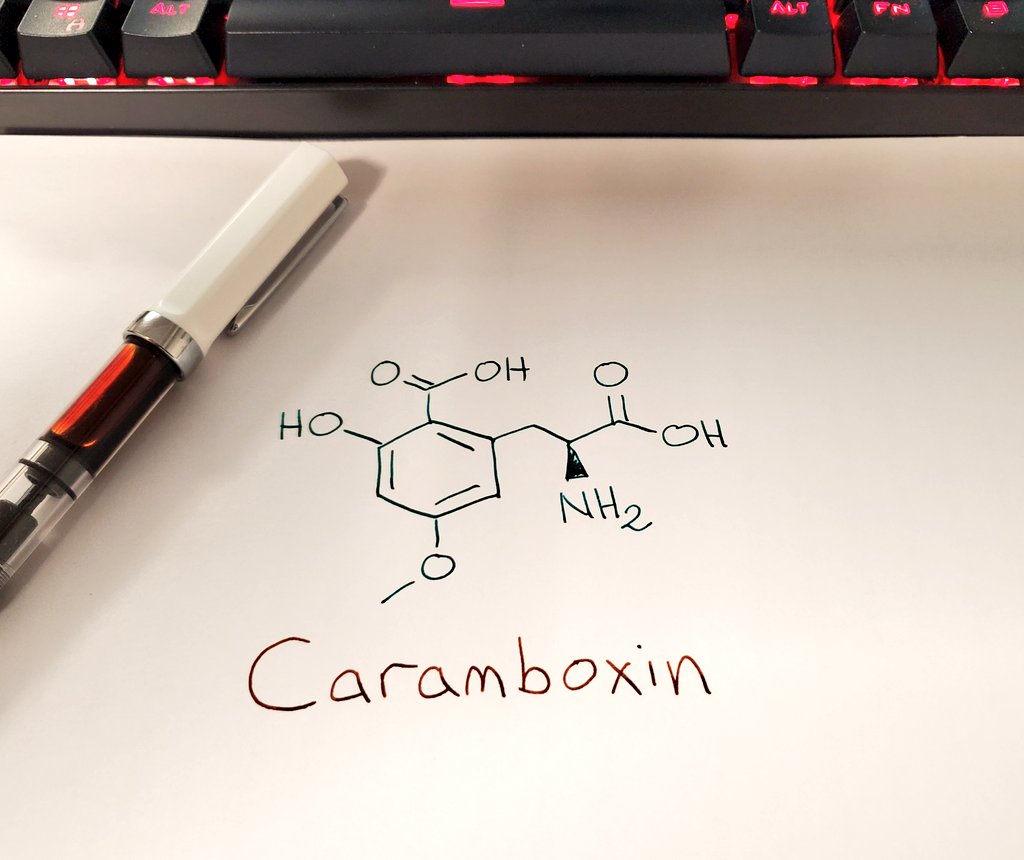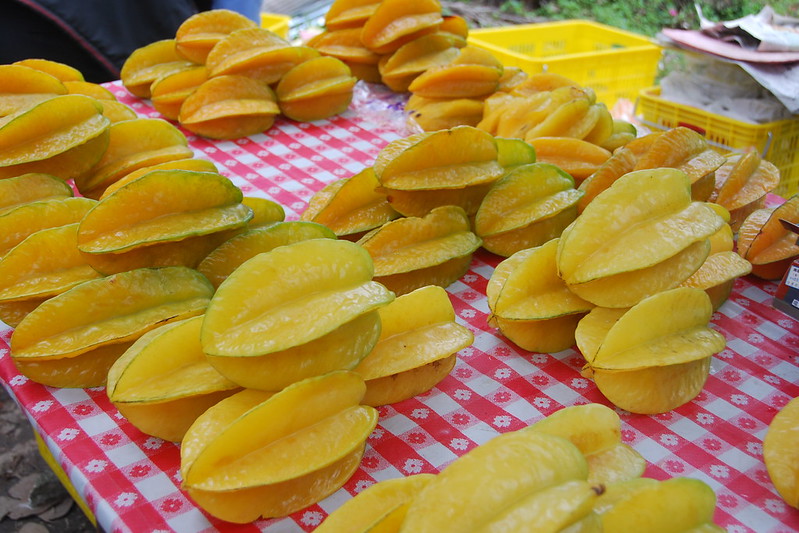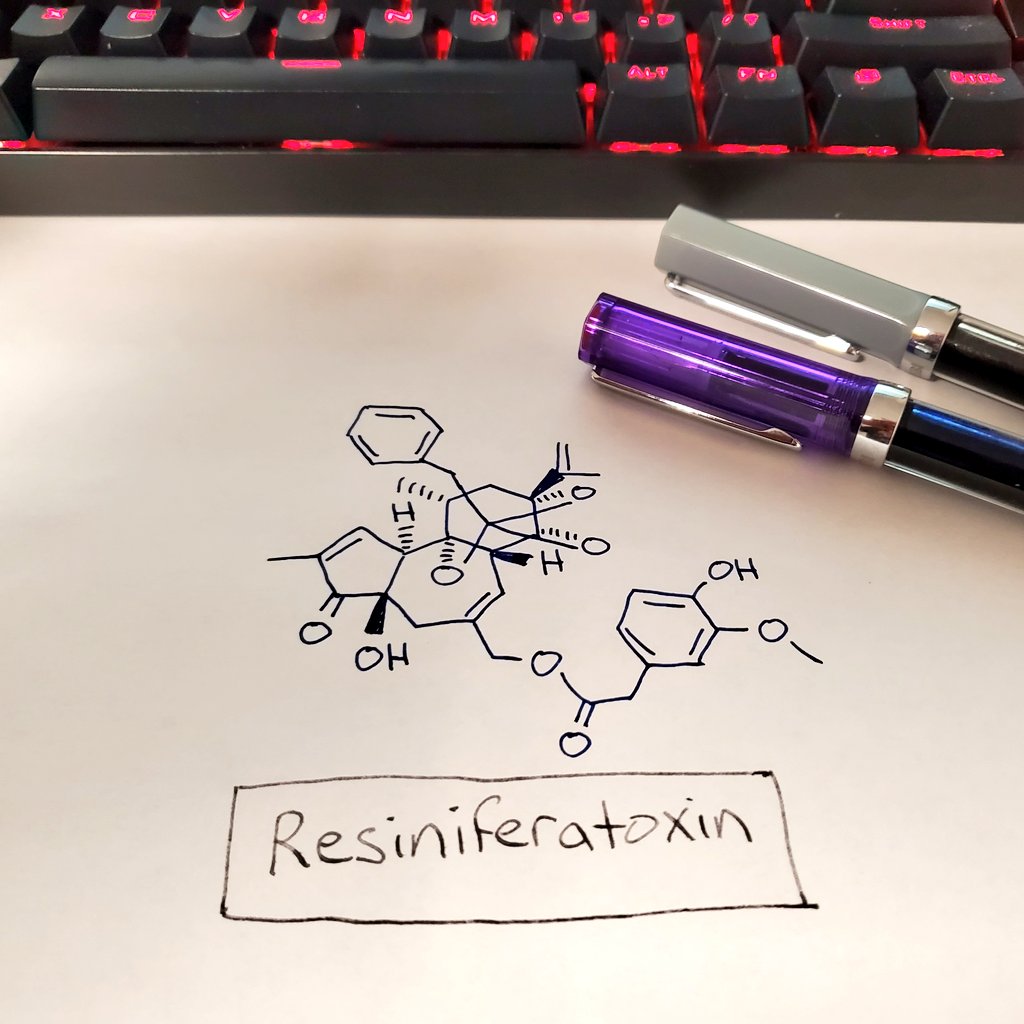
PhD Organic Chemist, Forensic Toxicologist & Prince of Poisons.
Writing NATURE'S POISONS, the science & history of nature's most vicious creations for WW Norton
How to get URL link on X (Twitter) App


 T-2 Mycotoxin is produced by species of the fungal genus Fusarium. They're essentially molds that grow in soils and affect plants. If you grow tomatoes that yellow, wither, and die in late summer, you've probably heard of "Fusarium wilt."
T-2 Mycotoxin is produced by species of the fungal genus Fusarium. They're essentially molds that grow in soils and affect plants. If you grow tomatoes that yellow, wither, and die in late summer, you've probably heard of "Fusarium wilt."


 Have you ever had tempeh? It's an Indonesian food made from fermented soybeans. Tempeh is sold as a very firm cake and has a wonderful nutty, earthy flavor. It's common in vegetarian and vegan cooking. I like it a lot. [FoodCraftLab (CC BY-SA-2.0)]
Have you ever had tempeh? It's an Indonesian food made from fermented soybeans. Tempeh is sold as a very firm cake and has a wonderful nutty, earthy flavor. It's common in vegetarian and vegan cooking. I like it a lot. [FoodCraftLab (CC BY-SA-2.0)] 

 I ❤️ Sandra Bullock. And I ❤️PRACTICAL MAGIC. It's a classic tale of "Girl meets boy, boy is an abusive serial killer who kidnaps the girl and her sister, sister poisons bad boy’s tequila with belladonna, bad boy dies. Throw in some magic for good measure." We’ve all been there.
I ❤️ Sandra Bullock. And I ❤️PRACTICAL MAGIC. It's a classic tale of "Girl meets boy, boy is an abusive serial killer who kidnaps the girl and her sister, sister poisons bad boy’s tequila with belladonna, bad boy dies. Throw in some magic for good measure." We’ve all been there. 

 Thebaine is not used therapeutically but is used commercially in the synthesis of some of the most important opioids we have on the market today. In anywhere from 2 to 8 steps you can produce all of the opioids shown below - there are more, but these are the important ones.
Thebaine is not used therapeutically but is used commercially in the synthesis of some of the most important opioids we have on the market today. In anywhere from 2 to 8 steps you can produce all of the opioids shown below - there are more, but these are the important ones. 

 Laudanosine and papaverine are minor alkaloids found in the opium poppy (Papaver somniferum), but they don't get near the attention of the heavy-hitter opiate morphine, which is made (rather simply) into heroin. Other alkaloids found in opium poppy are codeine and thebaine.
Laudanosine and papaverine are minor alkaloids found in the opium poppy (Papaver somniferum), but they don't get near the attention of the heavy-hitter opiate morphine, which is made (rather simply) into heroin. Other alkaloids found in opium poppy are codeine and thebaine. 

 There are about a dozen structurally similar brevetoxins that are produced by the dinoflagellate (a.k.a. algae) Karenia brevis. This algae is responsible for the "red tides" along the Gulf Coast in states like Florida.
There are about a dozen structurally similar brevetoxins that are produced by the dinoflagellate (a.k.a. algae) Karenia brevis. This algae is responsible for the "red tides" along the Gulf Coast in states like Florida.

 Orellanine is a mycotoxin, a toxin produced by fungi. Specifically, it is found in Cortinarius orellanus and Cortinarius rubellus, commonly known as "fools webcap" and "deadly webcap" mushrooms.
Orellanine is a mycotoxin, a toxin produced by fungi. Specifically, it is found in Cortinarius orellanus and Cortinarius rubellus, commonly known as "fools webcap" and "deadly webcap" mushrooms. 

 North Carolina, and Durham, was founded on tobacco. There was huge money in tobacco, but even though the industry is in decline, it's still important to NC with revenue of ~$1B/yr. As an aside, the Durham Bulls were originally named the Tobacconists in 1902 (cc @stephaniekays).
North Carolina, and Durham, was founded on tobacco. There was huge money in tobacco, but even though the industry is in decline, it's still important to NC with revenue of ~$1B/yr. As an aside, the Durham Bulls were originally named the Tobacconists in 1902 (cc @stephaniekays). 

 Colchicine is a prescription drug used to treat gout but it also has the most lovely natural sources, like the autumn crocus and the flame lily 😍. I'm sure you can figure out which is which.
Colchicine is a prescription drug used to treat gout but it also has the most lovely natural sources, like the autumn crocus and the flame lily 😍. I'm sure you can figure out which is which. 



 Starting at the main lot, we'll walk down into the open clearing to find POKEWEED. The berries are poisonous and will stain your hands. Mature plants are poisonous too, but small young ones used to be sold in cans.
Starting at the main lot, we'll walk down into the open clearing to find POKEWEED. The berries are poisonous and will stain your hands. Mature plants are poisonous too, but small young ones used to be sold in cans. 

 So that's horseradish growing in my garden, in case you were wondering where it actually came from. It goes amazingly well and the young leaves are edible - they add a nice little kick to a sandwich.
So that's horseradish growing in my garden, in case you were wondering where it actually came from. It goes amazingly well and the young leaves are edible - they add a nice little kick to a sandwich. 

 The inkcap mushrooms, or "inky caps", are edible mushrooms with a mild flavor. I know, you're here for the poisonous mushrooms, not the edible ones. It is edible, but not when you consume them with alcohol! Weird, I know, but I'll explain. [pic by Nick Saltmarsh (CC BY-2.0)]
The inkcap mushrooms, or "inky caps", are edible mushrooms with a mild flavor. I know, you're here for the poisonous mushrooms, not the edible ones. It is edible, but not when you consume them with alcohol! Weird, I know, but I'll explain. [pic by Nick Saltmarsh (CC BY-2.0)] 

 Caramboxin is found in starfruit, the fruit that is, uh, shaped like stars. It grows throughout Southeast Asia and tastes like a citrusy apple to me. It's a unique flavor and I rather like it. [pic by Ting W. Chang (CC BY-2.0)]
Caramboxin is found in starfruit, the fruit that is, uh, shaped like stars. It grows throughout Southeast Asia and tastes like a citrusy apple to me. It's a unique flavor and I rather like it. [pic by Ting W. Chang (CC BY-2.0)] 

 The resin spurge plant, Euphorbia resinifera is a cactus-y type thing found in north Africa. If you cut it open, it exudes a milky latex that contains resiniferatoxin. But watch out! [Pic by James Steakley (CC BY-SA 3.0)]
The resin spurge plant, Euphorbia resinifera is a cactus-y type thing found in north Africa. If you cut it open, it exudes a milky latex that contains resiniferatoxin. But watch out! [Pic by James Steakley (CC BY-SA 3.0)] 

https://twitter.com/MattWalshBlog/status/1298413074999894018First, forensic toxicology, or any part of a medico-legal death investigation, can not be done in a vacuum. I made this for death investigation talks. It's like the fire triangle: heat, fuel, air. To determine a cause of death we need: Investigation, Pathology, and Toxicology.


 On the chemistry side of things, it's got a super weird structure. That tri-phenoxyethyl ether thingy is odd (that's the top part, with the three oxygens (O's) I'm talking about). I don't know if I've seen a structure with one of those before, and I've seen a lot of structures.
On the chemistry side of things, it's got a super weird structure. That tri-phenoxyethyl ether thingy is odd (that's the top part, with the three oxygens (O's) I'm talking about). I don't know if I've seen a structure with one of those before, and I've seen a lot of structures.

 B is for batrachotoxin,
B is for batrachotoxin,